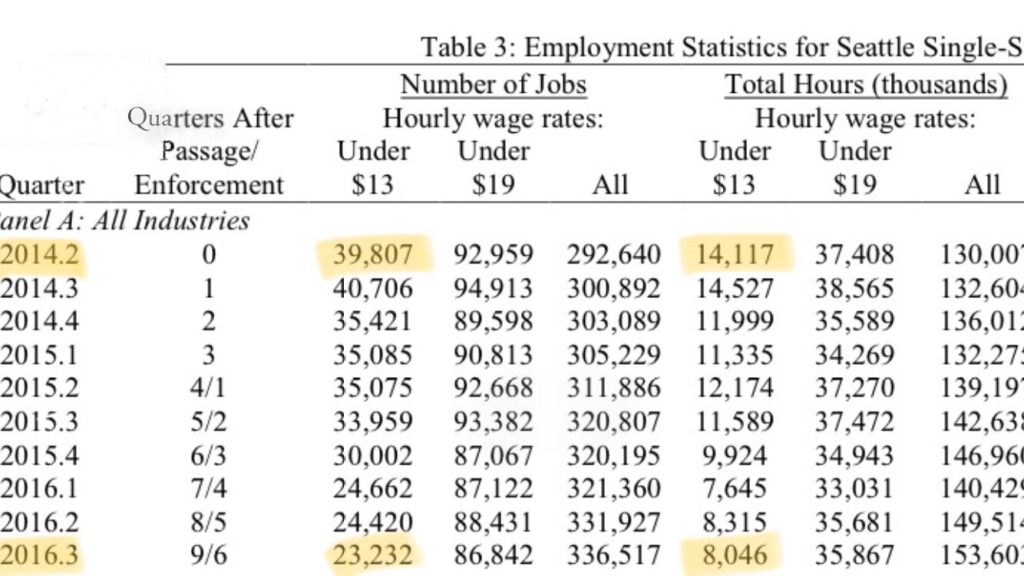LIVING WAGE: By 2023 the minimum wage for all California businesses will raise to $15 an hour, and it may create more problems than it solves.
By Ben Diguglielmo, Staff Writer
The battle for a “living wage” for minimum earners in California has been raging for years. Those in favor of increasing it believe that raising the government-enforced minimum wage will improve the quality of life for low skill workers; What they don’t know of, however, are the inherent problems that come with having a third party intervening in wage prices decided by an employer and an employee. When the minimum wage is raised 50% over 6 years it simply becomes inefficient for companies to keep low skilled laborers employed without cutting costs somewhere. As Ed Rensi the ex-CEO of McDonald’s stated, “I was at the National Restaurant Show yesterday and if you look at the robotic devices that are coming into the restaurant industry — it’s cheaper to buy a $35,000 robotic arm than it is to hire an employee who’s inefficient making $15 an hour bagging French fries — it’s nonsense and it’s very destructive and it’s inflationary and it’s going to cause a job loss across this country like you’re not going to believe,” Not only will automation take over the packaging, manufacturing, and food industries, but minimum wage earners that aren’t fired will likely see a significant increase in work, and a significant cut in hours and benefits.
The market value of the a job is set at the median value between how little workers are willing to work for, and how high a company is willing to pay their workers. Jobs that require a higher level of skill or dedication will pay more because there are less workers that are either willing or capable of performing them. Wages also depend on how much the specific task will benefit the business, so when you raise the minimum wage, those that do not produce more value than they are paid will be fired.
One could argue that the inevitable unemployment spike and lower job quality is a fair exchange for a higher quality of life for minimum earners. However, this won’t be the case, as companies that are forced to give their employees 50% raises won’t simply absorb the cost through profits; they have to make up for the loss somewhere. Those places will either be: cutting hours, increasing workload in a shorter period of time, automating jobs, or raising prices. If they decide to cut hours, full time employees will be diminished to part time and they will lose the benefits that come with a 40 hour week. Another solution for lost profits is laying off employees, not only will this increase the 4.8% unemployment rate in California but it will add workload to the remaining employees, lowering job quality and contributing to income inequality. The final option of upping costs is perhaps the most damaging to the economy. Companies would likely raise prices in proportion to the increased rate that they are paying their employees, which could be anywhere up to a 50% increase in the price of goods. Not only would this make raising the minimum wage a pointless endeavor because being paid 50% more is pointless when it costs 50% more to live, but it would inflate the currency in California, so everyone’s bank account could lose up to 50% of its value if spent in California.
Local business owner, John Imbriani, has over 100 minimum wage employees, and he said his solution for making up for the loss is holding employees more accountable for their actions, giving them more responsibility and raising prices up to 30% more by 2023. “Most minimum wage employees come in, and they get a job description, they have to do, 1, 2, and 3. But if we’re going to have to pay them 15$ an hour, we’re going to add 4, 5, and 6,” Imbriani says.
Those in favor of a high minimum wage will often point out Seattle as an example. While Seattle’s unemployment path isn’t falling due to the minimum wage hike, low skill jobs are going extinct. In a recent study done by The National Bureau Of Economic Research, it was found that within the sample size, that in the city of Seattle the total employment of workers, making under $13 had been cut almost in half from 39,807 in the 2nd quarter of 2014 to 23,232 in the 3rd quarter of 2016. This suggests that companies are either only hiring those with more experience, or are cutting low wage jobs altogether. The report also showed that hours worked by those making less than $13 an hour dropped from 14,117,000 to 8,046,000 in the same amount of time. That is 6 million total hours cut, and a total loss of 16.5 thousand jobs from low skill workers making under $13 an hour.


